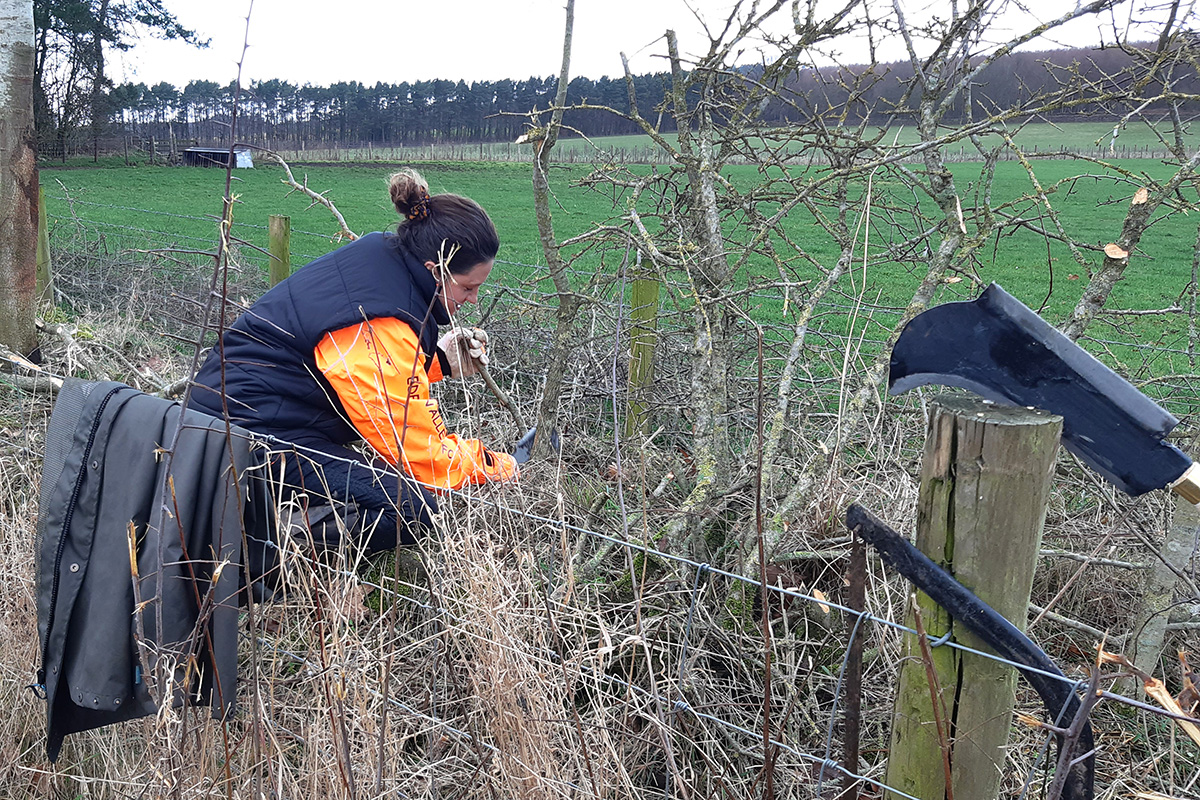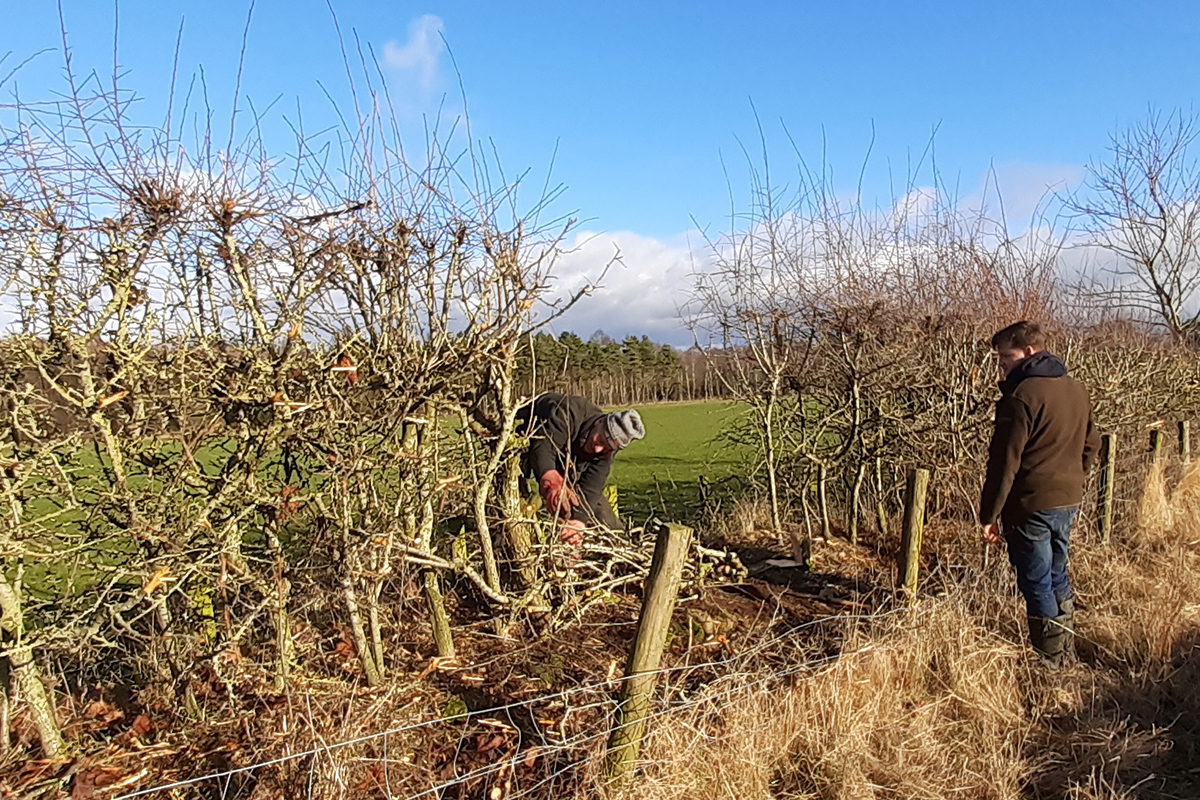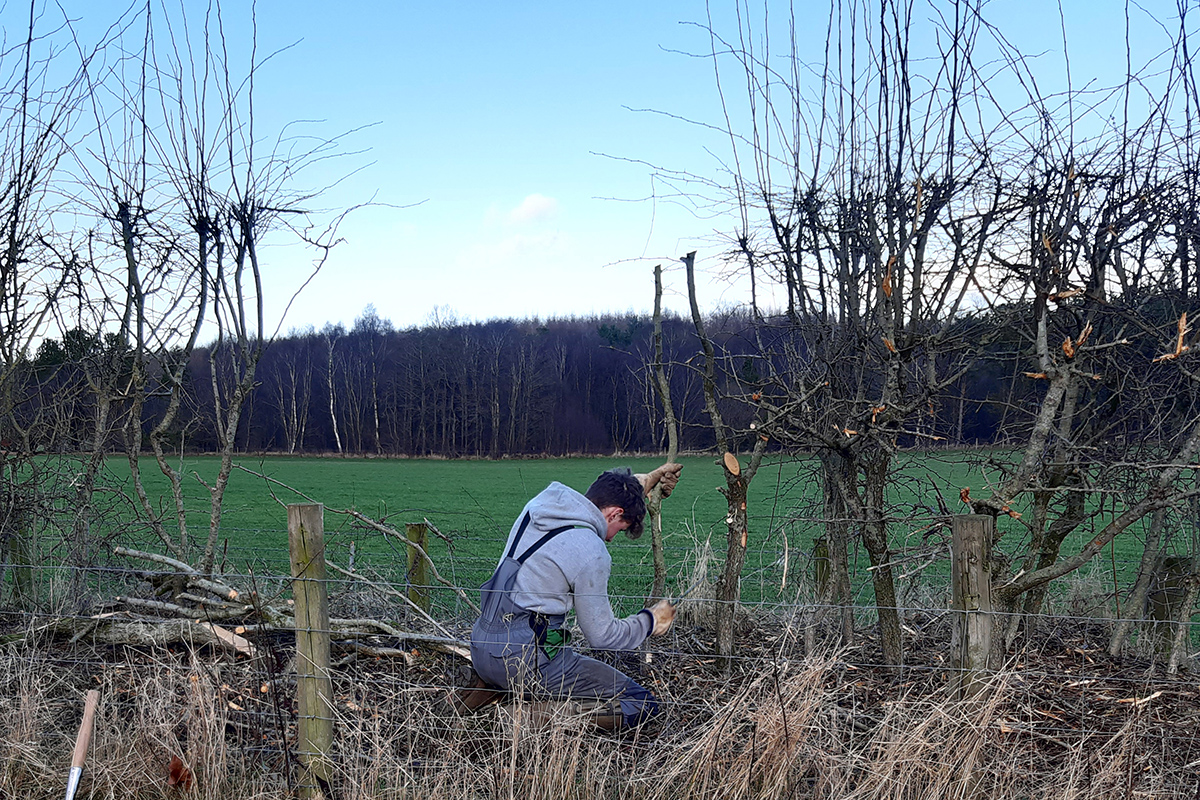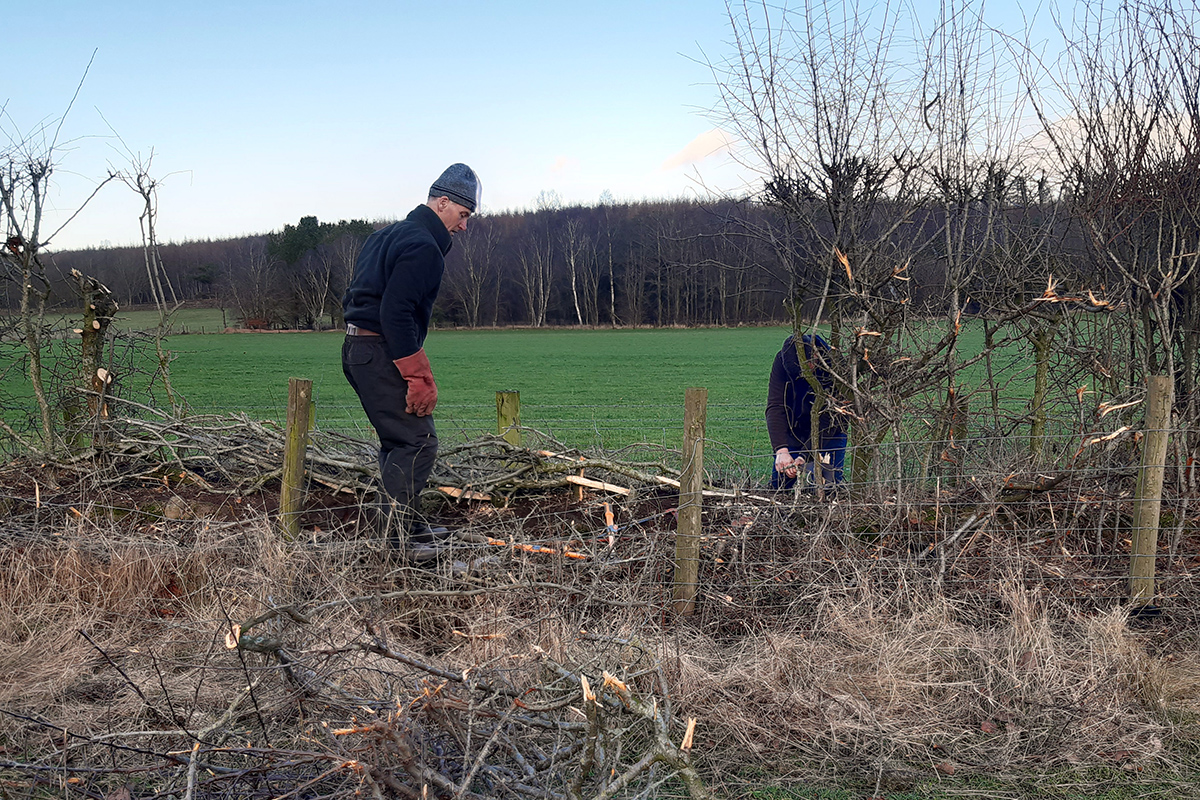
Reviving rural skills for rivers and nature
Working with nature is a key part of Eden Rivers Trust’s (ERT) water-friendly farming work and recently, 30 farmers joined them at Barrock End Farm, Armathwaite to learn the ancient art of hedge laying.
Everyone attending was encouraged to have a go and to learn how to trim back surplus growth and then to lay the pleacher (the cut stems) using a billhook, at the correct angle of 35 degrees to expose the cambium layer from which the new shoots will emerge.
Why are hedgerows good for rivers?
Hedgerows are true multi-taskers; they are a refuge for livestock, havens for wildlife (including pollinators), great for natural flood management; slowing and storing water as well as being a natural barrier. Left to their own devices, over time the trees will grow upwards and outwards, creating gaps and eventually becoming a line of trees.
About hedge laying
Hedge laying is a traditional form of hedge management that instead aims to regenerate the trees and extend the natural life of the hedgerow. Hedge laying technique varies around the UK, but at ERT’s hedge laying day, the Cumberland style was ably demonstrated by Mark Bulman from Carlisle.
Plenty of discussions took place regarding the merits of the various hedge laying styles and how best to manage the hedgerow after laying. The Hedgerow Society says that, with regular trimming, a laid hedge can last up to 50 years.
The value of hedgerows
The wider discussion on the day covered the natural capital value of hedgerows in terms of carbon sequestration, NFM, habitat and landscape character and how this value might benefit farmers in the future under the proposed Environmental Land Management Schemes in terms of attracting funding from various sources to maintain larger hedgerows in the future to provide public goods.
Andy Dyer, Senior Farming and Conservation Manager said,
It was an excellent day all round with many participants willing to have a go at hedge laying and to learn about how they could manage their hedges slightly differently in the future. One farmer commented that he now knew that, although he would like to he couldn’t expect to lay his hedges due to their age, so a different approach using coppicing and gapping up was going to be his preferred management option for the future.
Thanks to the Farmer Network for jointly hosting the day, to Mark Bulman for his time and generous advice, to Paul Coates and family for hosting the event and to Sid Hughes and his team for keeping everyone fed and watered on the day.
We’re planning another hedge laying taster day on the 24th of February. Look out for more details on the Things to Do page or on our social media channels.


